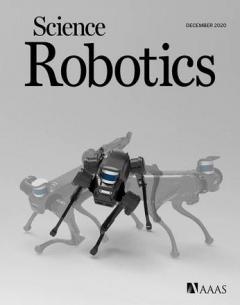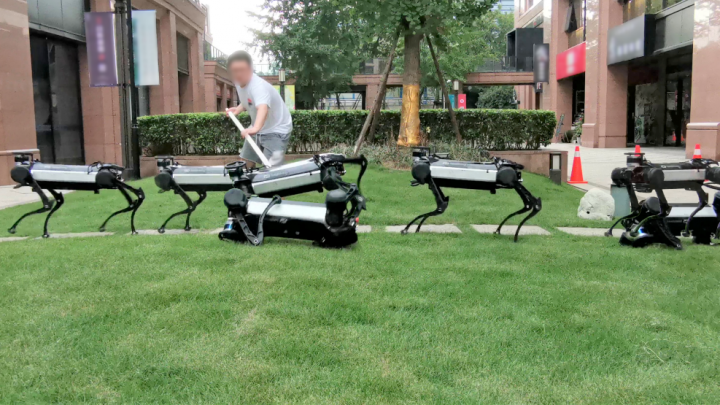Dr. Alex Li - Teaching a Robot Dog New Tricks
Alex Li and team, in collaboration with Zhejiang University, have created a quick-thinking quadruped that has the ability to use pre-learned skills to respond and adapt to previously unseen situations.

The research group, which comprises researchers from Zhejiang University, China and the School of Informatics, aims to ensure the resilience of autonomous robots by developing a new learning architecture that enables robots to create new functions from a group of taught, representative skills.
In their latest paper, which has been published in and chosen as the cover paper of the December issue of Science Robotics, they propose a multi-expert learning architecture (MELA). The work marks a milestone in robotics research as it offers a vision for fully independent robots, where humans would not have to intercede when the robot is presented with a new or unexpected obstacle.
Our new research reports a MELA that contains a group of specialised deep neural networks (the players) together with a gating network (the coach), which is similar to a soccer team. After training together, this group of "players" can refine better skills and the "coach" learns how to coordinate the team as a whole so that they are able to solve tasks that have not been seen before. This is new milestone in robotics and AI, as robots are able to deal with new problems they have not experienced before.
Using Jue-Ying, a quadruped robot who was subjected to a variety of previously-unseen terrains and counterbalance disturbances, MELA was tested rigorously. The robot was first taught a distinct set of pretrained experts, or skills, each in a different deep neural network (DNN); this initialised MELA. The robot then learned to combine these distinct DNNs using a Gating Neural Network (GNN), which enabled MELA to develop more specialised expert skills and adaptive movements.

Watch a demonstration of the Jue-Ying robot in training:
- Video: Teaching a Robot Dog New Tricks with Dr. Alex Li
- Demonstration of multi-expert learning architecture (MELA) using a quadruped robot in a variety of environments e.g rough terrain, counterbalance disturbances.
-
- Video: Jue-Ying robot in training
- Jue-Ying robot in training
Video credit: Yang et al., Sci Robot. 5, cabb2174 (2020)
